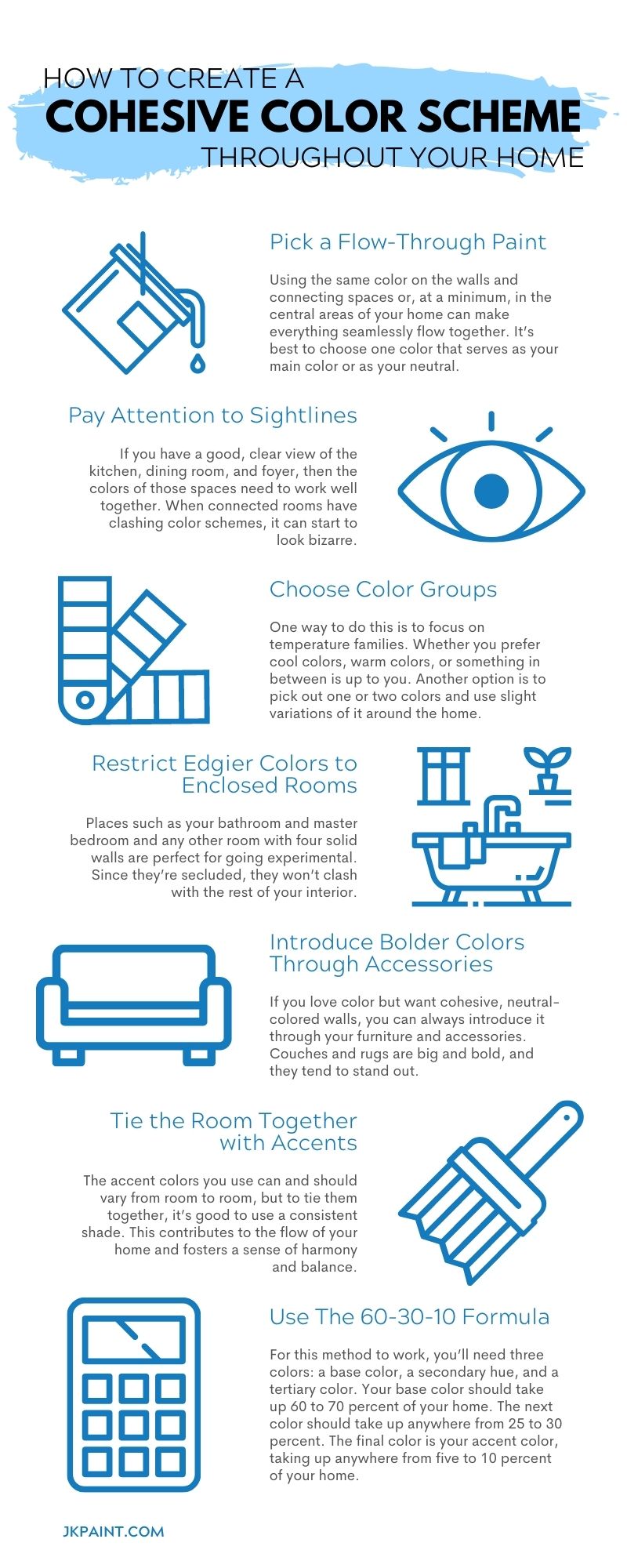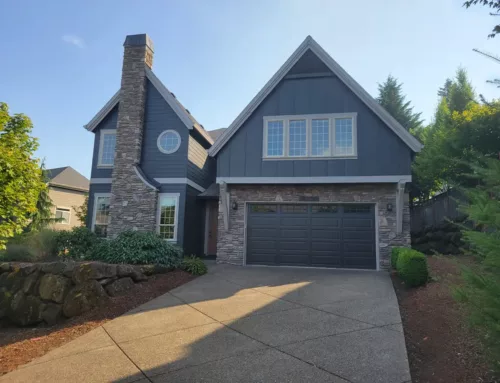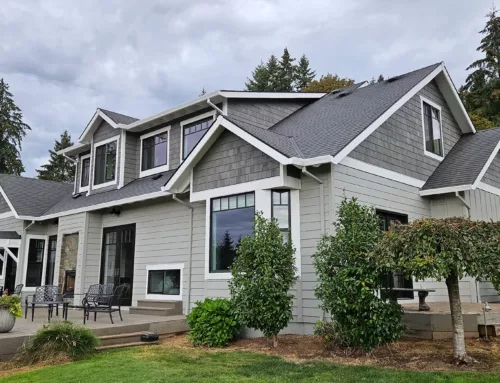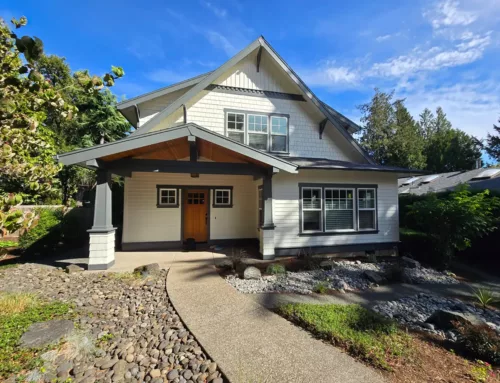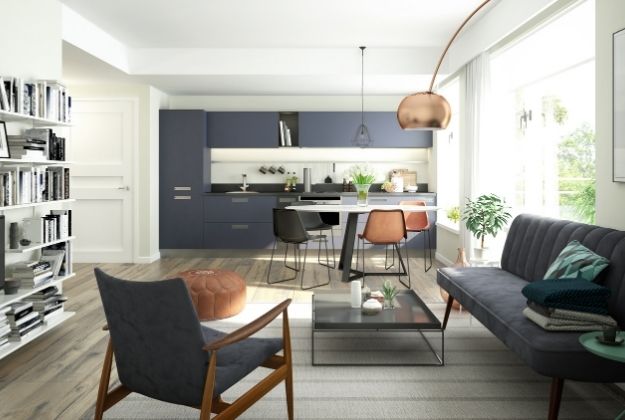
When it comes to color, there’s no “correct” palette. Preferences vary. One person’s ideal color might be a bright, bold pink, while someone else might prefer shades that are muted and earthy. But that doesn’t mean all color combinations are perfect. An awkward, mismatched palette can make a room look and feel choppy. So, how do you pick out a good palette that uses all the colors you dearly love? If you’re wondering how to create a cohesive color scheme throughout your home, there’s good news. These simple tips and tricks will advise you on how to pick an attractive, cohesive color scheme for your spaces.
Pick a Flow-Through Paint
A simple, stress-free way to create a cohesive feel is to settle on a specific color. Using the same color on the walls and connecting spaces or, at a minimum, in the central areas of your home can make everything seamlessly flow together. It’s best to choose one color that serves as your main color or as your neutral. This doesn’t mean you need to pick out something plain. You can paint your walls a subdued green or a vibrant, eye-catching magenta—so long as it’s consistent. If you have a home with an open floor plan, this method of painting works especially well.
Pay Attention to Sightlines
Are your rooms enclosed? If so, you might be able to get away with painting each of their walls a new, wacky color. If your house is open concept, you’ll want to be more cautious with your color choices. When you’re standing in your living room, what do you see? If you have a good, clear view of the kitchen, dining room, and foyer, then the colors of those spaces need to work well together. When connected rooms have clashing color schemes, it can start to look bizarre.
Choose Color Groups
Instead of relying on one specific color, you can broaden your horizons by picking out a group of complementary colors. One way to do this is to focus on temperature families. Whether you prefer cool colors, warm colors, or something in between is up to you. Another option is to pick out one or two colors and use slight variations of it around the home. If your main color is blue, you can move from a gray-blue in the living room to a pure blue in the kitchen and then pick out a navy-colored paint for your foyer.
You can also ask your paint provider to create tints of a particular color. They can make your main color lighter or darker by adding white or a darker shade of paint into the mixture. Struggling to pick out two starting colors? Try looking at paint decks for inspiration.
Restrict Edgier Colors to Enclosed Rooms
Still have the urge to go crazy with your paint? Consider restricting your use of wilder, out-of-the-ordinary colors to enclosed rooms, such as your bathroom. Places such as your bathroom and master bedroom and any other room with four solid walls are perfect for going experimental. Since they’re secluded, they won’t clash with the rest of your interior. These secluded areas are usually secondary areas of the home, too. You spend all day in the living room and kitchen, but you only see your bedroom in the early morning and late night—and usually, it’s not open to strangers. If you’re only looking at it for a few hours each day, who cares if it’s a vibrant neon green?
Introduce Bolder Colors Through Accessories
If you love color but want cohesive, neutral-colored walls, you can always introduce it through your furniture and accessories. Couches and rugs are big and bold, and they tend to stand out. If you’d prefer something subtler, why not toss some throw pillows on your couch, hang paintings on the wall, or set coasters on the coffee table? Limiting your brighter, bolder colors to furniture and accessories can help you avoid oversaturating a space with color. You might love yellow, but when your walls, floor, furniture, and all your accessories are painted the same shade, it can start to get overwhelming. Using color is a great way to highlight certain pieces. In a room that’s otherwise gray, any rich, colorful accents will stand out.
Tie the Room Together with Accents
The accent colors you use can and should vary from room to room, but to tie them together, it’s good to use a consistent shade. This contributes to the flow of your home and fosters a sense of harmony and balance. Is your living room accented with blues and greens? Fill your dining room with blues and yellows. The blue stays the same, maintaining a sense of consistency between both rooms.
Use The 60-30-10 Formula
Looking for another way to create a cohesive color scheme throughout your home? Try thinking about your color palette as a math problem. For this method to work, you’ll need three colors: a base color, a secondary hue, and a tertiary color. If necessary, you can add a fourth. Anything more than that, and things can start looking chaotic. Your base color should take up 60 to 70 percent of your home. The next color should take up anywhere from 25 to 30 percent. The final color is your accent color, taking up anywhere from five to 10 percent of your home.
If you get bored of using the same scheme in every room, consider switching it up. Let’s say your living room’s main color is gray, your secondary color is blue, and your tertiary color is orange. For the next room, alter the colors and their percentages. For example, the walls can be blue, with gray as an accent. As a final touch, you can scatter a few orange objects around the room. As long as the colors you choose stay consistent, you can change which ones are dominant and which ones aren’t.
You don’t have to go through the painting process alone. JK Paint and Contracting is here to assist you with all your painting needs, whether you’re painting your home’s full exterior and interior or a simple accent wall. If you need a reliable, consistent company to handle your residential painting in Portland, Oregon, give us a call so that we can discuss the details of your next project.
